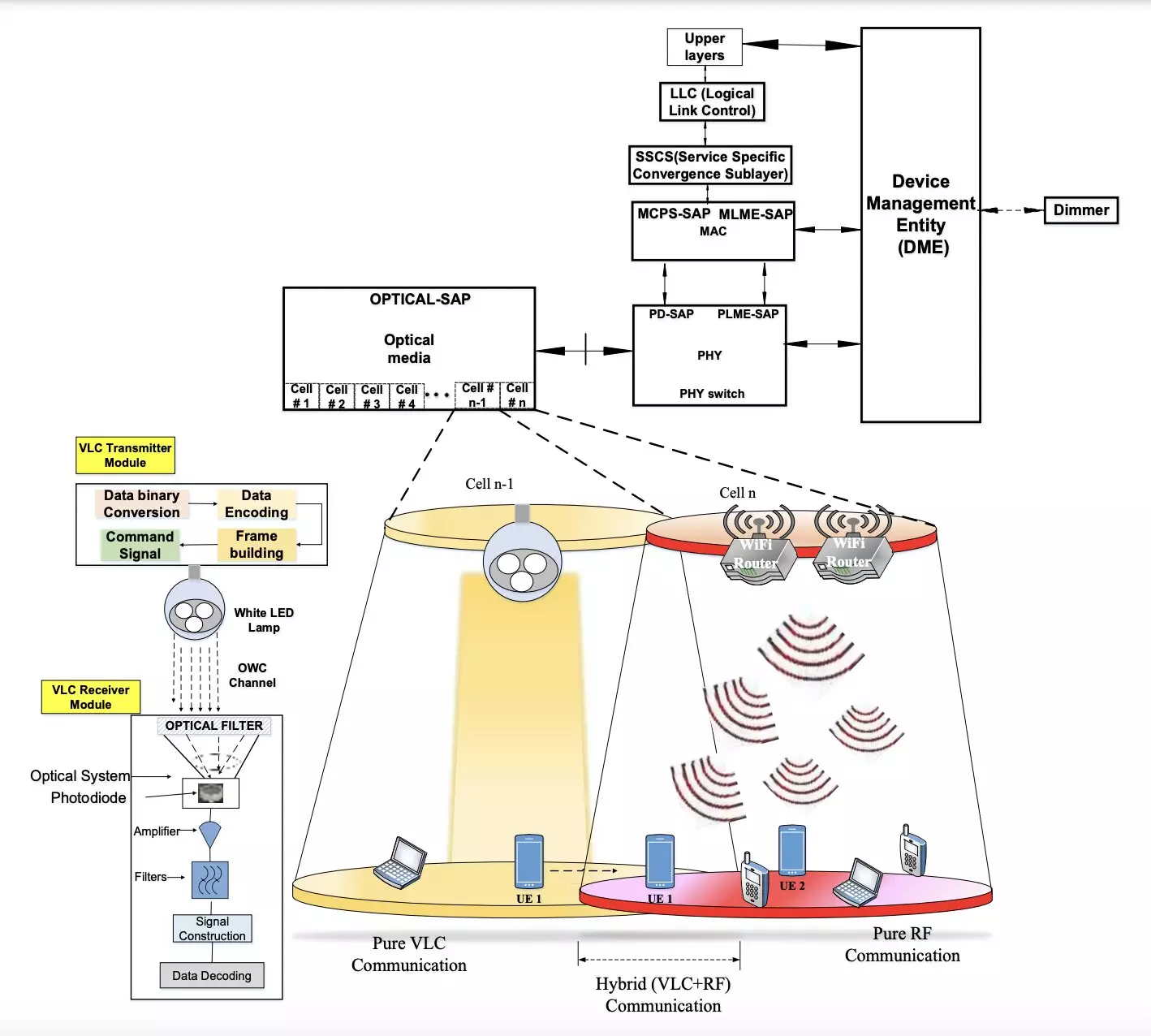The demand for wireless internet access is continuously increasing as people rely on it for their daily activities, from professional communications to entertainment. However, this surge in demand also leads to higher power consumption, resulting in increased carbon emissions globally. In order to address this issue, researchers are exploring energy-efficient techniques to support wireless communication while limiting power consumption.
One of the innovative solutions that have emerged is visible light communication (VLC). This approach utilizes visible light to transmit data, leveraging light-emitting diodes (LEDs) or other artificial light sources. Recently, researchers at Central University (CU) in India introduced a hybrid approach that combines VLC with RF communication. This hybrid solution aims to enable reliable communication in indoor environments with a high data transmission rate, while consuming less energy.
The wireless communication system developed by the researchers consists of two main components: a transmitter and a receiver module. These modules are physically separated but connected via a VLC channel. The transmitter transmits binary data through LED-produced light, while the receiver, equipped with a photo-sensitive device, extracts and decodes the information from the transmitted light. The team also proposes the use of modulation schemes to maintain a continuous data stream and consistent power consumption during communication.
The researchers conducted an evaluation of their proposed wireless communication system using various simulation platforms. Their findings indicate that the system could facilitate stable communication within the same indoor environment, achieving significant energy savings. By comparing the energy efficiency of RF communication, Hybrid (RF+ VLC), and pure VLC, the team demonstrated the advantages of their hybrid approach. The simulations conducted using Python, Scilab, and MathWorks tools showed a high energy efficiency, lower Specific Absorption Rate (SAR), and enhanced battery lifetime of mobile devices.
This recent study by the team of researchers contributes to the ongoing efforts to reduce power consumption and electromagnetic radiation in wireless communications. The potential of their approach is highlighted by the initial simulations, indicating the promise of further improvements and future studies. By focusing on energy efficiency and reliable communication, the researchers are paving the way for the future of wireless communication systems.
The development of energy-efficient solutions for wireless communication is crucial in addressing the increasing demand for wireless internet access while minimizing power consumption. The hybrid approach proposed by the researchers at Central University in India showcases the potential of combining VLC with RF communication to achieve reliable and efficient indoor communication. As technology continues to advance, the focus on energy efficiency in wireless communication systems will play a significant role in shaping the future of connectivity.


Leave a Reply